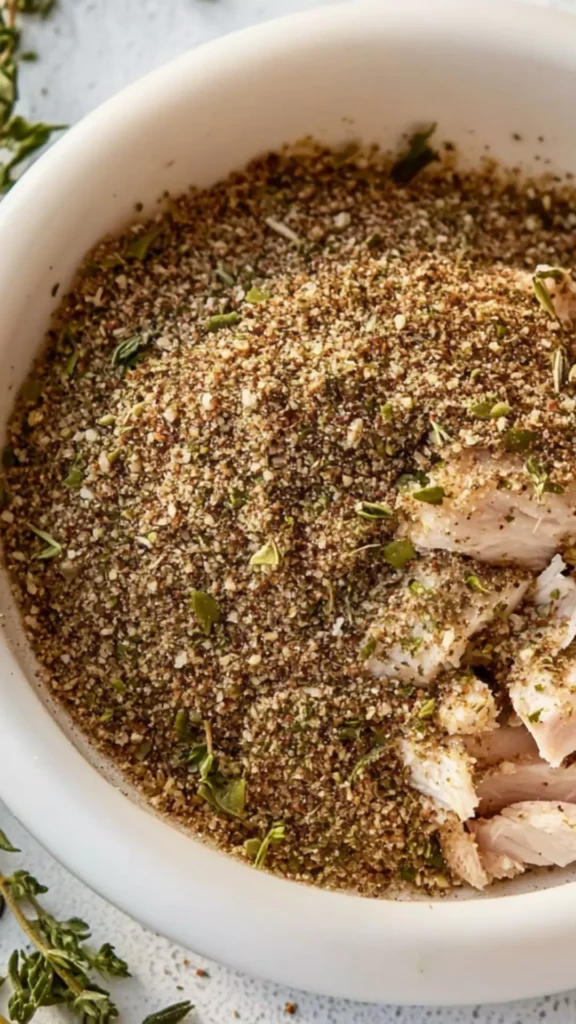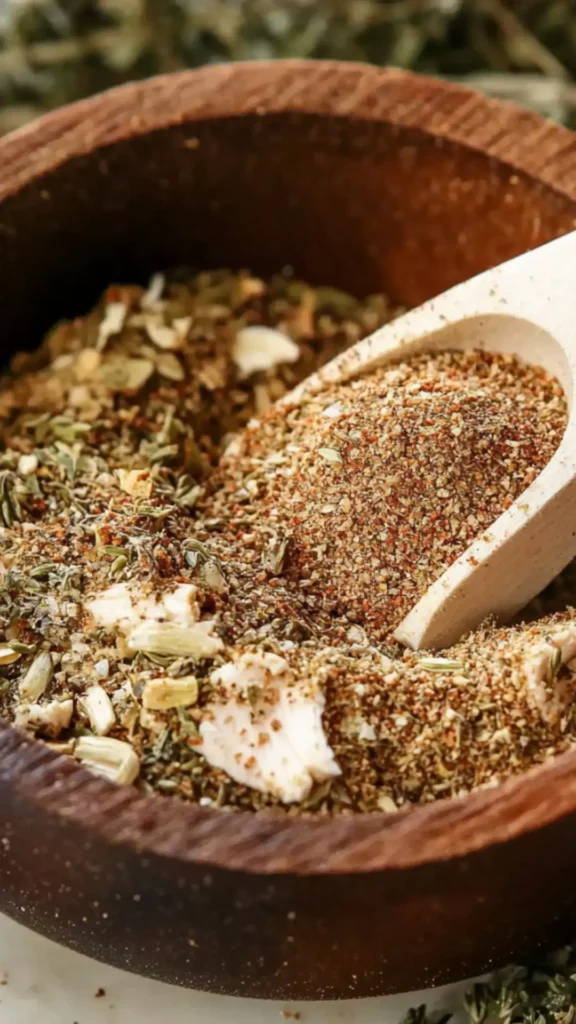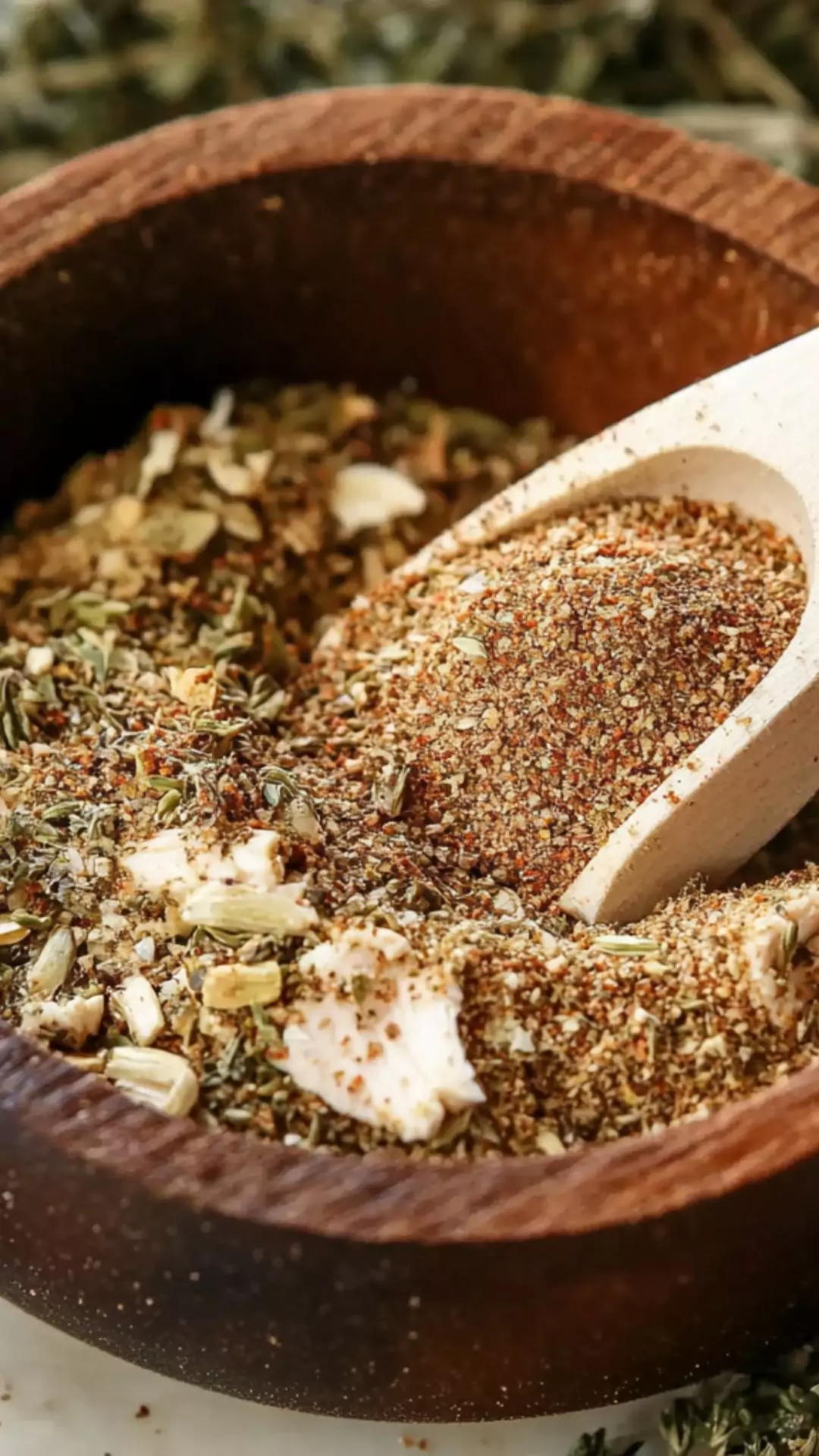When it comes to Greek seasoning for chicken, think beyond just the bird. Serving it alongside a colorful Mediterranean quinoa salad or some roasted veggies brings a festive touch to your table. I love pairing my seasoned chicken with a side of lemony couscous.
The bright, zesty flavors really complement the rich notes of the seasoning. You can’t go wrong with a classic Greek salad, either—think fresh cucumbers, ripe tomatoes, and creamy feta. Don’t forget the tzatziki sauce! That creamy garlic yogurt dip takes the entire meal up a notch.
Okay, let’s dive into the different aspects of this delightful blend. Trust me, by the end of this read, you’ll be eager to shake it onto your next meal.

As a registered dietitian and passionate home cook, I often find myself exploring spice blends that bring life to the simple ingredients in my kitchen. Greek seasoning is one of those blends that can transform chicken into a flavor-packed delight. It’s my go-to for busy weeknights and casual gatherings alike. It’s easy to whip up, and the results?
Well, let’s just say, they don’t disappoint. Whether it’s grilled, baked, or sautéed, this blend enhances the natural flavors of chicken in ways that make you wonder why you didn’t try it sooner.
You will also like the following Side Dish recipes!
- Best Sugar Snap Peas On Stove
- How to make Spicy Crispy Chickpeas
- Easy Dunkin Donuts Hash Browns Recipe
What is Greek Seasoning Blend for Chicken?
Greek seasoning blend is a harmonious collection of spices and herbs that reflects the culinary traditions of Greece. The combination generally features ingredients like oregano, dill, rosemary, and paprika, bringing depth and a touch of earthiness to your dish. It’s a bit like opening a window to a sun-drenched Mediterranean landscape filled with fragrant herbs and spices.
While many store-bought blends are available, creating your own is incredibly rewarding. Plus, you can customize it to match your taste. It’s about having control over what goes into your meal while enjoying the authentic flavors of Greek fare.
How Does It Taste?
You might be asking, “What’s the flavor like?” Imagine sinking your teeth into juicy chicken that’s been grilled or roasted to perfection, and then seasoned with herbs that dance across your palate. The umami from the paprika melds beautifully with the earthy qualities of oregano and thyme.
If you close your eyes, you can almost hear the waves lapping against the shores of a Greek island. The taste is warm, inviting, and brings a touch of adventure to any meal.
Why You’ll Love This!
If the prospect of easy weeknight meals sounds like your jam, this seasoning is for you. It’s incredibly versatile and works on chicken and other proteins like fish or veggies too.
You can even sprinkle it on potatoes, enhancing their natural flavor without much effort. Not to mention, it’s a quick way to infuse bold flavors without lengthy marinating sessions.
Ingredients
To create a delightful Greek seasoning blend, gather the following:
- 1 teaspoon ground cinnamon
- 1 teaspoon freshly ground black pepper
- 1 teaspoon dried sweet basil
- 2 teaspoons dried Mediterranean oregano
- 1 teaspoon smoked paprika
- ½ teaspoon ground nutmeg
- 2 teaspoons sea salt
- 1 teaspoon cornstarch
- ½ teaspoon ground thyme
- 1 teaspoon dried parsley flakes
- 1 teaspoon dried dill leaves
- 1 teaspoon minced dried rosemary
- 1 teaspoon dried marjoram leaves
- ½ teaspoon ground turmeric
These ingredients can usually be found in any well-stocked spice aisle. Each brings its own unique flavor profile to the blend.

Step-by-Step Directions
Now, let’s prepare this blend in a way that’s sure to make your chicken sing.
Step 1: Gather Your Ingredients
Start by collecting all the spices listed above. You don’t need fancy equipment; just your measuring spoons and a mixing bowl will do.
Step 2: Measure and Mix
In your mixing bowl, add each spice according to the measurements given. It’s a simple but satisfying process. The more you do it, the more you’ll appreciate the vibrant colors and aromas wafting up.
Step 3: Blend
Using a whisk or a fork, gently mix the spices. This step ensures that your blend is uniform and each chicken bite gets an equal amount of flavor.
Step 4: Store
Once mixed, you have several options. You can transfer the seasoning into a small jar or an airtight container. Make sure to label it so you can easily find it later. It will last several months in a cool, dark place.
Step 5: Season Your Chicken
When you’re ready to use the blend, sprinkle it generously on your chicken. You can use it on breasts, thighs, or even whole birds. I recommend letting the chicken sit for a bit after seasoning—this allows the flavors to penetrate the meat.
Tips on Making Greek Seasoning Blend for Chicken
Here are some handy tips to use when making your Greek seasoning blend:
- Customize the Heat: Want a little kick? Incorporate red pepper flakes. Add just a pinch to avoid overwhelming your dish.
- Experiment with Fresh Herbs: If you prefer fresh herbs, use them instead of dried, but remember to adjust the quantity since fresh herbs are less potent.
- Mix in a Food Processor: For a finer texture, blend the spices in a food processor. This will create a more cohesive mix, perfect for seasoning.
- Use Salt Wisely: If you’re on a low-sodium diet, reduce the sea salt. You can always add more later if necessary.
- Layer It On: When cooking, try seasoning at different stages. For instance, sprinkle some on before cooking and a bit more right after it comes off the heat.

How Do You Store This Greek Seasoning Blend for Chicken?
Proper storage is crucial to maintain the freshness and flavor of your Greek seasoning blend.
- Use an Airtight Container: Store in a jar or a container that seals well. This prevents moisture and air from spoiling your mix.
- Keep it Cool and Dry: A pantry shelf works well, but definitely avoid areas that get warm or humid, like above the stove.
- Check the Expiration: While spices don’t technically expire, their potency diminishes over time. A good rule of thumb is to replace your homemade blends every 6 to 12 months.
What Other Substitutes Can You Use in Greek Seasoning Blend for Chicken?
If you run out of some ingredients or want to create a twist on the classic blend, consider these alternatives:
- Italian Seasoning: A combo of basil, oregano, and thyme can offer a similar flavor profile.
- Za’atar: This Middle Eastern spice blend, which contains thyme, sumac, and sesame, adds a different yet complementary flavor.
- Herbes de Provence: This mix typically includes herbs like lavender, thyme, and marjoram. It introduces a floral note to your chicken dish.
- Cajun Seasoning: If you enjoy a spicy kick, consider using a Cajun blend, though it will provide a distinct shift in flavor.
- Curry Powder: For an enticing change, use curry powder. You’ll shift from Mediterranean to a much more exotic flavor profile.

Greek Seasoning Blend For Chicken
Ingredients
Equipment
Method
- Now, let’s prepare this blend in a way that’s sure to make your chicken sing.
- Start by collecting all the spices listed above. You don’t need fancy equipment; just your measuring spoons and a mixing bowl will do.
- In your mixing bowl, add each spice according to the measurements given. It’s a simple but satisfying process. The more you do it, the more you’ll appreciate the vibrant colors and aromas wafting up.
- Using a whisk or a fork, gently mix the spices. This step ensures that your blend is uniform and each chicken bite gets an equal amount of flavor.
- Once mixed, you have several options. You can transfer the seasoning into a small jar or an airtight container. Make sure to label it so you can easily find it later. It will last several months in a cool, dark place.
- When you’re ready to use the blend, sprinkle it generously on your chicken. You can use it on breasts, thighs, or even whole birds. I recommend letting the chicken sit for a bit after seasoning—this allows the flavors to penetrate the meat.
Nutrition
Notes
- Customize the Heat: Want a little kick? Incorporate red pepper flakes. Add just a pinch to avoid overwhelming your dish.
- Experiment with Fresh Herbs: If you prefer fresh herbs, use them instead of dried, but remember to adjust the quantity since fresh herbs are less potent.
- Mix in a Food Processor: For a finer texture, blend the spices in a food processor. This will create a more cohesive mix, perfect for seasoning.
- Use Salt Wisely: If you’re on a low-sodium diet, reduce the sea salt. You can always add more later if necessary.
- Layer It On: When cooking, try seasoning at different stages. For instance, sprinkle some on before cooking and a bit more right after it comes off the heat.
Tried this recipe?
Let us know how it was!Frequently Asked Questions
Can I use Greek seasoning on other proteins?
Absolutely! It works beautifully on fish, lamb, and even vegetables. The flavors complement various dishes.
How much seasoning should I use for one chicken breast?
On average, use about 1 to 2 teaspoons for each chicken breast, depending on how bold you want the flavor to be.
Should I marinate the chicken after seasoning?
While it’s not necessary, marinating the chicken (even for just 30 minutes) can enhance the flavors. Use olive oil and lemon juice for best results.
Can I make a larger batch of the seasoning?
Yes! Feel free to double or triple the recipe. Just make sure to store it properly.
Does Greek seasoning suit vegetarian dishes?
Definitely! Shake it on veggies, chickpeas, or even tofu to boost flavor and create well-seasoned plant-based meals.
How can I incorporate Greek seasoning into sauces or dressings?
Adding a teaspoon to homemade dressings or dips can elevate the flavor profile. It’s particularly good in yogurt-based sauces.
Conclusion
Crafting your own Greek seasoning blend for chicken is a delightful venture that adds flavor without complication. It’s about taking simple ingredients and transforming them into something extraordinary. The customization possibilities are endless; feel free to adapt the recipe to suit your taste.
As someone who has served up countless meals seasoned with this blend, I can wholeheartedly say, it’s a game-changer in the kitchen. So shake, sprinkle, or rub it on, and watch your chicken turn into a culinary masterpiece that will have everyone coming back for seconds. Happy cooking!


